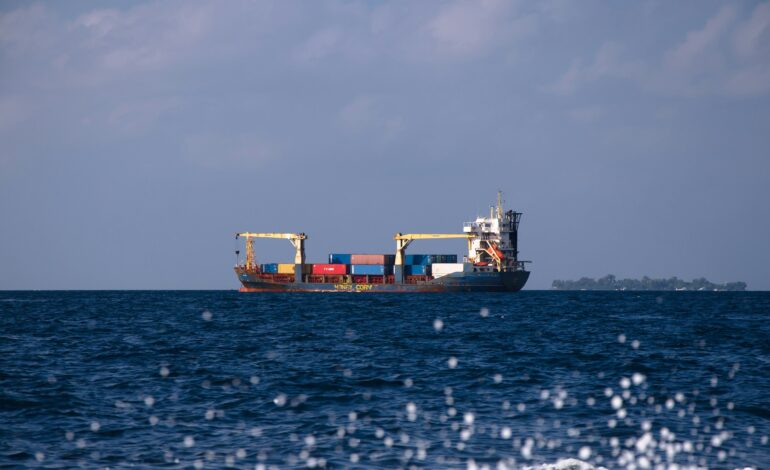
Public-Private Partnerships in Developing Bunker Fuel Infrastructure
In the dynamic landscape of global shipping, the development of robust bunker fuel infrastructure is crucial for ensuring efficient operations and environmental sustainability. Public-private partnerships (PPPs) have emerged as a strategic approach to mobilize resources, expertise, and innovation towards enhancing bunker fuel infrastructure. This article explores the role of PPPs in developing bunker fuel infrastructure, their benefits, challenges, and notable examples shaping the future of maritime energy solutions.
Understanding Public-Private Partnerships (PPPs)
Public-private partnerships involve collaboration between government entities and private sector organizations to finance, build, and operate infrastructure projects. In the context of bunker fuel infrastructure, PPPs facilitate shared responsibilities and risks, leveraging each sector’s strengths to achieve common objectives. Key stakeholders in PPPs include governments, port authorities, fuel suppliers, shipping companies, and technology providers.
Benefits of PPPs in Bunker Fuel Infrastructure
- Accelerated Project Development:
- Capital Investment: Private sector involvement enables access to capital and investment resources necessary for large-scale infrastructure projects, such as LNG bunkering facilities and alternative fuel infrastructure.
- Efficiency: Streamlined decision-making processes and project management expertise from private partners expedite the development and implementation of infrastructure projects.
- Risk Sharing and Cost Efficiency:
- Financial Risk: PPPs distribute financial risks between public and private entities, mitigating the burden on public budgets and enhancing project feasibility.
- Operational Efficiency: Private sector efficiency in operations and maintenance can optimize cost-effectiveness and long-term sustainability of bunker fuel infrastructure.
- Innovation and Technology Integration:
- Technological Expertise: Private sector partners bring cutting-edge technologies and innovation to improve fuel efficiency, reduce emissions, and enhance environmental performance.
- Research and Development: Collaborative R&D initiatives foster innovation in alternative fuels (e.g., LNG, hydrogen), digitalization, and sustainable energy solutions tailored to maritime needs.
Challenges and Considerations
- Complex Regulatory Environment:
- Compliance and Standards: Harmonizing regulatory frameworks and ensuring adherence to environmental regulations (e.g., IMO sulfur caps) require effective coordination and alignment between public policies and private sector operations.
- Legal and Contractual Issues: Negotiating PPP agreements involves navigating complex legal frameworks, risk allocation, and performance monitoring to safeguard public interests and private investments.
- Financial Viability:
- Revenue Models: Developing sustainable revenue streams for PPP projects, such as user fees or tariffs, is essential to ensure financial viability and long-term profitability.
- Cost Recovery: Balancing cost recovery with affordability for end-users (e.g., shipping companies) while maintaining competitive pricing in a global market poses financial challenges.
- Community and Stakeholder Engagement:
- Transparency and Accountability: Engaging local communities, environmental groups, and industry stakeholders in the PPP process promotes transparency, builds trust, and addresses socio-environmental concerns.
- Public Participation: Ensuring public participation in decision-making processes enhances project acceptance and alignment with community interests and sustainability goals.
Case Studies and Success Stories
- Port of Rotterdam, Netherlands:
- The Port of Rotterdam has partnered with private entities to develop LNG bunkering facilities, positioning itself as a leading hub for sustainable maritime fuel solutions in Europe.
- PPP initiatives have supported infrastructure upgrades and regulatory alignment to facilitate LNG adoption and reduce environmental impact.
- Singapore LNG Corporation (SLNG):
- SLNG collaborates with government agencies and international partners to expand LNG infrastructure at Singapore’s ports, enhancing bunkering capabilities and supporting LNG-powered vessels.
- PPPs have enabled Singapore to establish a comprehensive LNG ecosystem, promoting cleaner energy alternatives and strengthening maritime competitiveness.
Future Outlook and Strategic Imperatives
- Scaling Sustainable Solutions:
- Renewable Energy Integration: Expanding PPPs to include renewable energy sources (e.g., hydrogen, ammonia) supports decarbonization goals and accelerates the transition towards zero-emission shipping.
- Digital Transformation: Harnessing digital technologies (e.g., IoT, blockchain) in PPP projects enhances operational efficiency, supply chain transparency, and data-driven decision-making.
- Global Collaboration and Knowledge Exchange:
- International Cooperation: Collaborative PPP models facilitate knowledge exchange, capacity building, and best practice sharing across regions, advancing global standards for bunker fuel infrastructure.
- Policy Harmonization: Aligning regulatory frameworks and sustainability standards encourages cross-border investments in bunker fuel infrastructure, fostering resilience and sustainability in maritime transportation.
Conclusion
Public-private partnerships play a pivotal role in shaping the future of bunker fuel infrastructure, driving innovation, sustainability, and resilience in the maritime sector. By leveraging combined expertise, resources, and shared goals, PPPs enable the development of cost-effective, environmentally responsible solutions to meet evolving industry needs. As global shipping navigates towards a greener and more efficient future, fostering strategic collaborations through PPPs will be essential in unlocking the full potential of bunker fuel infrastructure and advancing sustainable maritime energy solutions worldwide.





